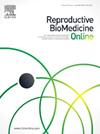Twenty-five years of research in endometriosis
IF 3.7
2区 医学
Q1 OBSTETRICS & GYNECOLOGY
引用次数: 0
Abstract
Research rarely progresses in a straight line. It is more like an unpredictable front, marked by bursts of brilliance that fade after a few years, sudden breakthroughs, periods of stagnation, rediscoveries of forgotten ideas and occasional setbacks. Endometriosis research is no exception to these dynamics. In this opinion piece, three Generation X researchers who have been dedicated to endometriosis since the early days of their careers reflect on the field's progress over the past 25 years. Their verdict? Not disappointing. In fact, some pivotal strides have been made. The understanding of endometriosis has undergone a dramatic transformation. Hormonal therapies and assisted reproductive technology have emerged as first-line treatments, dethroning the once-central role of surgery. Non-invasive diagnosis of the disease has spread. This shift marks a notable evolution in how the disease is managed. However, high-throughput technologies have failed to deliver transformative insights, and the root causes of the disease remain as elusive as ever. Despite the setbacks, the progress made offers hope and direction.
子宫内膜异位症研究 25 年
研究很少是直线前进的。它更像是一条不可预测的战线,其特点是辉煌的爆发,几年后就会消失,有突然的突破,有停滞的时期,有被遗忘的想法的重新发现,还有偶尔的挫折。子宫内膜异位症的研究也不例外。在这篇观点文章中,三位从职业生涯早期就致力于子宫内膜异位症的X一代研究人员回顾了过去25年来该领域的进展。他们的判决吗?不令人失望。事实上,已经取得了一些关键的进展。对子宫内膜异位症的认识经历了一个戏剧性的转变。激素疗法和辅助生殖技术已经成为一线治疗手段,取代了手术曾经的核心地位。无创诊断的疾病已经蔓延。这一转变标志着该疾病管理方式的显著演变。然而,高通量技术未能提供变革性的见解,疾病的根本原因仍然像以往一样难以捉摸。尽管有挫折,取得的进展提供了希望和方向。
本文章由计算机程序翻译,如有差异,请以英文原文为准。
求助全文
约1分钟内获得全文
求助全文
来源期刊

Reproductive biomedicine online
医学-妇产科学
CiteScore
7.20
自引率
7.50%
发文量
391
审稿时长
50 days
期刊介绍:
Reproductive BioMedicine Online covers the formation, growth and differentiation of the human embryo. It is intended to bring to public attention new research on biological and clinical research on human reproduction and the human embryo including relevant studies on animals. It is published by a group of scientists and clinicians working in these fields of study. Its audience comprises researchers, clinicians, practitioners, academics and patients.
Context:
The period of human embryonic growth covered is between the formation of the primordial germ cells in the fetus until mid-pregnancy. High quality research on lower animals is included if it helps to clarify the human situation. Studies progressing to birth and later are published if they have a direct bearing on events in the earlier stages of pregnancy.
 求助内容:
求助内容: 应助结果提醒方式:
应助结果提醒方式:


